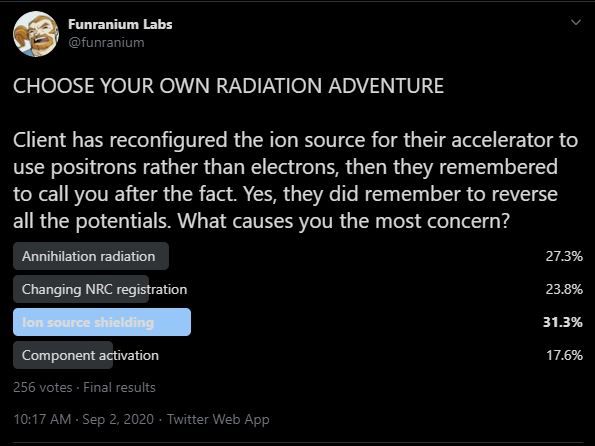Which brings us to the most important question several of you identified that you’ll be asking. “Where did you get a positron ion source large enough for this? Howwwwww???” If you’re lucky, it’s one you know about that they’ve installed into the accelerator. To have enough positrons to make a decent current ion source, you’re going to need an isotope with a half-life long enough to build with. Because there aren’t all that many positron emitters like that, this means your ion source is probably a big pile of Na-22. While Na-22 is a positron emitter with a ~2.5yr half-life that you can utilize, it is also a VERY potent gamma emitter, especially when you get enough of it together to think of it as a positron source instead. Usually, ion sources for accelerators just make a lot of soft (low energy) x-rays as you generate plasmas to throw down the line. Soft enough that the ion sources are typically self-shielding. This is *NOT* the case for a GBq Na-22 source. You need some lead, stat. Lots of it.
I’m happy to say that they called before trying to reconfigure the accelerator. This was because they were stymied trying to figure out a way to build the ion source safely. Their first attempt resulted in a contamination incident and everything got put away with a harrumph. But it’s cool, they’ve got a decade and change to figure it out before that source dies away too much to be useful. Also, they added a lot more lead around the safe to be better neighbors.
~fin~
